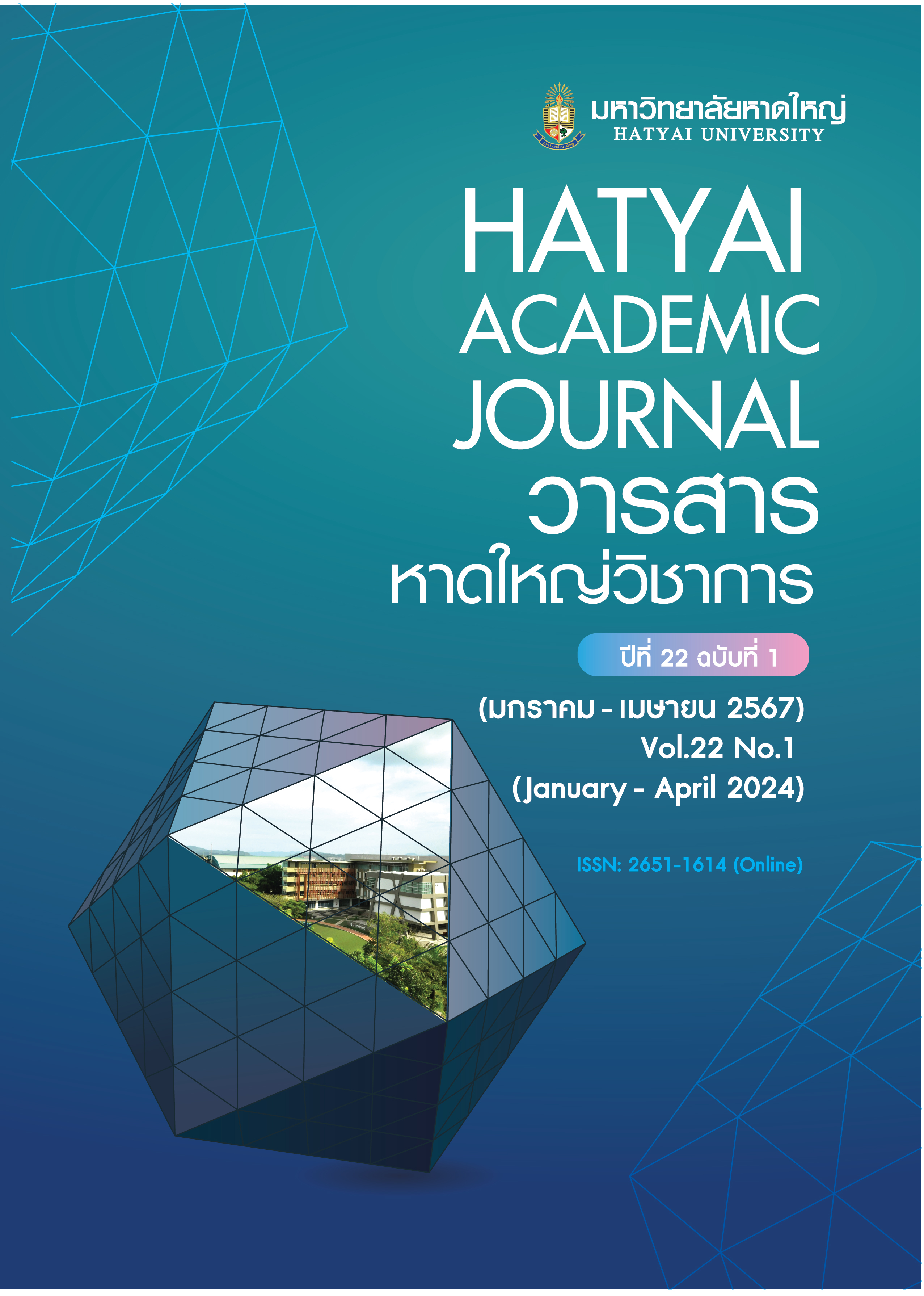Confirmatory Factor Analysis of the Supervising Commission of the Police Station Administration’s Plan Following the Community Policing Theory
Main Article Content
Abstract
The purpose of this study was to examine the consistency of the plan measurement model of the Supervising Commission of the Police Station Administration (SCPSA) according to the community policing theory and empirical data through the Confirmatory Factor Analysis (CFA). The data were collected from 600 community members who were representatives of Thailand’s SCPSA committee members using questionnaires, which had Cronbach’s alpha value of 0.980 in reliability testing. The analysis was carried out through descriptive statistics, first-order CFA, and second-order CFA using the AMOS program.
The results showed that the second-order CFA of the SCPSA’s plan consisted of three components: policy contents, policy-driven organizations, and policy practitioners. The factors loading were 0.913, 0.977, and 0.960 respectively at a significant level of 0.001 and the goodness of fit with empirical data was harmonious ( /df = 2.792, CFI = 0.989, TLI = 0.983, RMSEA = 0.055, RMR = 0.005). The results suggested that the three components were suitable for a constructed model for testing further relationships with other related variables; e.g., a collaborative process and performance of SCPSAs. The key finding from this study indicated that police stations, as key drivers of the SCPSA’s plan, were an essential organization in supporting public participation to achieve results according to the SCPSA’s plan.
Article Details

This work is licensed under a Creative Commons Attribution-NonCommercial-NoDerivatives 4.0 International License.
All published articles are evaluated by three qualified peer reviewers from various institutions through a double-blind process, where reviewers do not know the authors’ identities and authors do not know the reviewers’ identities. The content and articles in the Hatyai Academic Journal reflect the authors’ views only and are neither the opinions of the editorial board nor the responsibility of Hatyai University. The Editorial Board of the Hatyai Academic Journal allows articles to be reproduced for academic purposes, on the condition that the original source is clearly cited.
References
Chanchao, S., Sutthisai, W., & Sunthorn, S. (2018). Factors influence the policy implementation of the promotion of people participation in Buriram Police Station. Buriram Province. Chophayom Journal, 29(2), 151-160. [in Thai]
Chandarasorn, V. (2019). Public administration: A science and art of public affairs management (2nd ed.). Bangkok: Prikwan Graphics. [in Thai]
Chiamchiroj, N. (2021). The metropolitan Tharuea Police Station officers’ opinions concerning working within the power and duties prescribed by law of the commissioner’s office for monitoring and following up the operations of Tharuea Police Station. Rajapark Journal, 15(38), 153-165. [in Thai]
Chotchakornpant, K. (2018). Community policing. Bangkok: Nubna Creation. [in Thai]
Community Oriented Policing Services. (2014). Community-oriented policing defined. Washington, DC: U.S. Department of Justice, Office of Community Oriented Policing Services.
Comrey, A. L., & Lee, H. B. (2013) A first course in factor analysis (2nd ed.). Hove: Psychology.
Hair, J. F., Black, W. C., Babin, B. J., & Anderson, R. E. (2010). Multivariate data analysis: A global perspective. Upper Saddle River, NJ: Pearson Education.
Kline, R. B. (2016). Principles and practice of structural equation modeling (4th ed.). New York: Guilford Press.
Lipsky, M. (2010). Street-level bureaucracy: Dilemmas of the individual in public service. Russell: Sage Foundation.
McLaughlin, J. A., & Jordan, G. B. (2004). Using logic models. In J. S. Wholey, H. P. Hatry, & K. E. Newcomer (Eds.), Handbook of practical program evaluation (pp. 7-32). San Francisco: Jossey-Bass.
Miller, L. S., More, H. W., & Braswell, M. C. (2017). Effective police supervision. London: Routledge.
Noijad, T. (2023). Theory model of public policy implementation. Journal of Digital Business and Social Sciences, 9(1), 1-15. [in Thai]
Office of National Police Policy Board. (2008). Handbook of the audit committee and monitoring of police administration in Bangkok, provinces and police stations. Bangkok: National Police Policy Office. [in Thai]
Poothakool, K. (2017). Crime prevention in the next decade and police system development. Nonthaburi: Matichon Pakkred Printing House. [in Thai]
Royal Thai Police. (2018). The 20-year strategy of the Royal Thai Police (2018-2037). Bangkok: Royal Thai Police. [in Thai]
Saophun, S., & Sahapattana, P. (2019). The success of policy implementation in Narathiwat: A case study of action plans and problem-solving for southern border provinces development, 2015-2017. Thai Journal of Public Administration, 17(2), 1-21. [in Thai]
Sicharoen, M., Bowonnantakul, T., Yuyod, P., & Sudsakorn, T. (2019). Knowledge management of strengthening public participation on crime prevention and suppression for Thai society (Report on research promotion and support activities). Bangkok: National Research Agency. [in Thai]
Songkramyos, K., & Wongthanavasu, S. (2020). The operation of the audit and monitoring committees of police administration at Kranuan Police Station, Khon-kean Province. Journal of Modern Learning Development, 5(6), 61-74. [in Thai]
Tawharanurak, C. (2022). Problems and guideline for solving on the current Thai police organization management structure. Songklanakarin Law Journal, 4(2), 1-20. [in Thai]
Trojanowicz, R., & Bucqueroux, B. (1990). Community policing: A contemporary perspective. Cincinnati, OH: Anderson.
Wechaporn, S., Sahapattana, P., & Chotchakornpant, K. (2016). Factors affecting traffic police officers’cooperation of road safety policy implementation on law enforcement: A case of drivers who wear no helmet. Journal of Burapha College of Commerce Review, 11(2), 113-126. [in Thai]
Wisedsing, K., & Charoenwiriyakul, C. (2019). Work performance and problems of the monitoring and follow up police administration committee of the provincial police station in Nakhon Pathom Province. Journal of Philosophical Vision, 26(2), 12-22. [in Thai]
World Bank. (2020). World development indicators. Retrieved form http://data.worldbank.org/data-catalog/world-development-indicators

